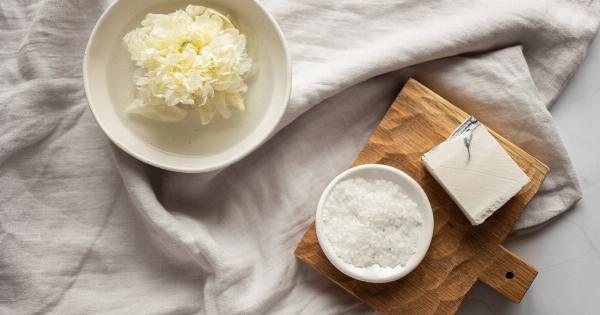With the arrival of winter, many of us start to experience changes in our skin.
Dryness is a common concern during this season, but what about those with oily skin? While it may seem counterintuitive, oily skin can still be a problem even in the colder months. In this article, we will explore why your skin may still be oily in winter and provide some tips on how to manage and care for your oily skin during this time of year.
Understanding Oily Skin
Oily skin is characterized by an overproduction of sebum, the skin’s natural oil. This excess oil can lead to a shiny complexion, enlarged pores, and an increased likelihood of acne breakouts.
Those with oily skin often struggle with keeping their skin matte and controlling the production of oil throughout the day.
Why Does Oily Skin Persist in Winter?
While many people experience dry skin during winter, those with oily skin may still find their skin prone to oiliness. There are a few reasons why this may occur:.
1. Indoor Heating
During winter, indoor heating becomes a necessity to keep us warm. However, constant exposure to artificial heat can strip the skin of its natural moisture, leading to dryness.
In response, the skin may produce more oil to compensate for the lack of hydration, resulting in oily skin.
2. Dehydration
In winter, we tend to drink less water and consume more warm beverages like coffee and tea. This can contribute to dehydration, which signals the body to produce more oil to protect the skin.
It’s important to stay hydrated during winter to prevent this cycle of oiliness.
3. Overwashing
Many people believe that washing their face frequently will help combat oiliness. However, overwashing can strip the skin of its natural oils, leading to increased oil production as a defense mechanism.
It’s essential to find a balance and not over-cleanse your skin, especially during the winter months.
4. Lack of Moisturization
Some people with oily skin skip moisturizers, thinking they will only worsen the oiliness. However, failing to moisturize can actually dehydrate the skin, prompting it to produce more oil.
Using a lightweight, non-comedogenic moisturizer can help maintain the skin’s hydration levels without clogging pores.
Now that we understand why oily skin can persist in winter let’s explore some tips to help manage and care for oily skin during the colder months:.
1. Choose the Right Cleanser
Using a gentle cleanser that is specifically formulated for oily or acne-prone skin is crucial. Look for cleansers that contain ingredients like salicylic acid or benzoyl peroxide, which help control oil production and prevent breakouts.
Avoid harsh cleansers that can strip the skin of its natural moisture.
2. Exfoliate Regularly
Exfoliating once or twice a week can help remove dead skin cells and unclog pores, preventing the buildup of oil and dirt. Opt for chemical exfoliants like AHAs or BHAs, which are less abrasive and suitable for oily skin.
Avoid using physical scrubs with rough particles that can irritate the skin.
3. Use Oil-Free and Non-Comedogenic Products
When selecting skincare products, opt for oil-free and non-comedogenic formulas. These products are specifically designed not to clog pores or contribute to excess oiliness.
Look for keywords like “oil-free,” “non-comedogenic,” or “won’t clog pores” on the packaging.
4. Moisturize Appropriately
Even oily skin needs hydration, especially during winter. Choose lightweight, gel-based moisturizers that provide adequate hydration without leaving a greasy residue.
Look for moisturizers that contain hyaluronic acid, which helps retain moisture in the skin.
5. Control Shine with Oil-Blotting Sheets
If you still experience excessive oiliness throughout the day, keep oil-blotting sheets handy. These thin sheets can absorb excess oil without removing makeup or disturbing the skin.
Gently blot your T-zone or any other areas prone to oiliness to control shine.
6. Don’t Skip Sunscreen
Regardless of the season, sunscreen is a must-have in any skincare routine. Look for lightweight, oil-free sunscreen formulations with at least SPF 30.
Sunscreen not only protects the skin from harmful UV rays but also helps prevent signs of premature aging.
7. Avoid Hot Water
While a steaming hot shower may feel great during winter, it can actually strip the skin of its natural oils and worsen oiliness. Opt for lukewarm water when cleansing your face and body to prevent excessive dryness and oil production.
8. Add a Weekly Clay Mask
Applying a clay mask once a week can help absorb excess oil and draw out impurities from the skin. Look for masks that are specifically formulated for oily skin and contain ingredients like kaolin clay or bentonite clay.
Avoid leaving the mask on for too long, as it may lead to dryness.
9. Stay Hydrated
Drinking enough water is crucial for overall skin health. Aim to drink at least 8 glasses of water a day to keep your skin hydrated from within.
Additionally, incorporating foods with high water content into your diet, such as cucumbers and watermelon, can also contribute to hydration.
10. Consult a Dermatologist
If your oily skin is persistent and causing significant concerns, it’s best to consult a dermatologist. They can assess your skin condition, recommend suitable treatments, and provide personalized advice for managing oily skin during winter.
By following these tips, you can effectively manage and care for your oily skin during winter. Remember, understanding your skin’s needs and maintaining a balanced skincare routine are essential for a healthy complexion all year round.




























